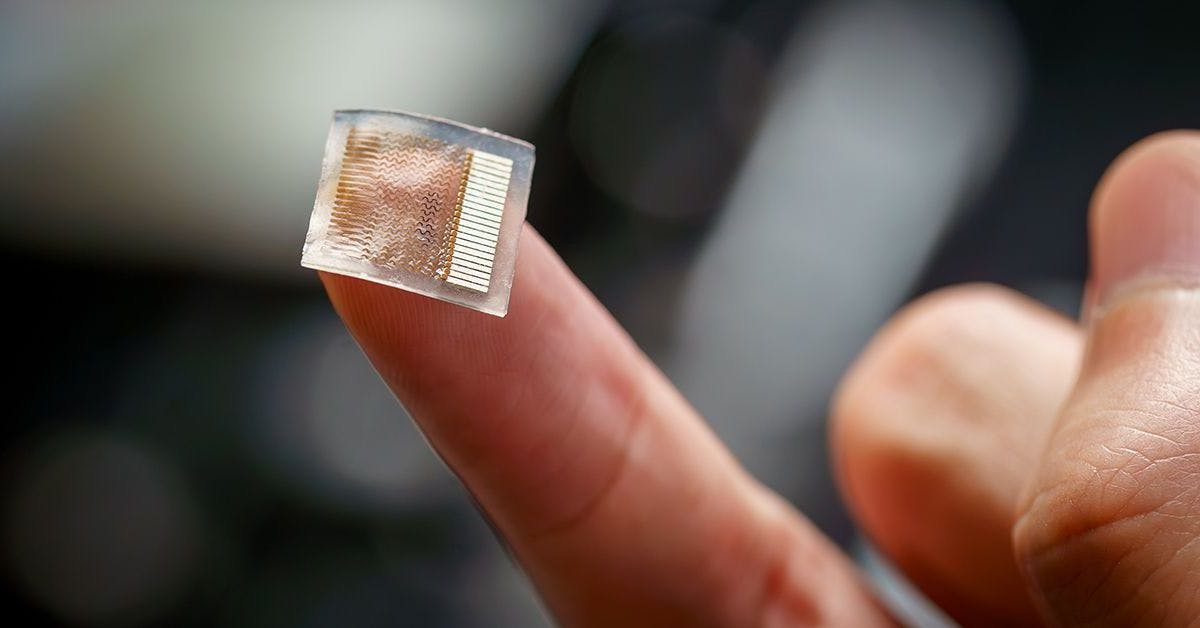Stick It to Hypertension
A stretchy, wearable patch from UC San Diego enables noninvasive and continuous blood pressure monitoring using ultrasound waves.

High blood pressure is often referred to as a “silent killer” because it generally does not cause any noticeable symptoms, allowing it to go undetected for a long time. This is a very serious problem because untreated high blood pressure can result in the development of conditions like a heart attack, stroke, or kidney disease. With nearly half of all adults experiencing some abnormal elevation of their blood pressure, more concerted efforts are clearly needed to detect this condition early so that treatments can be initiated before serious complications occur.
Unfortunately, present methods for measuring blood pressure are simply not up to the task. The standard option among noninvasive tests is the pressure cuff. This instrument can only capture occasional data points, which do not give a clear picture of someone’s actual condition given that blood pressure is quite variable throughout the day. The devices are also somewhat bulky and inconvenient, making them impractical for frequent use.
Patch me up
A new measurement device has recently been unveiled by a team of researchers at the University of California San Diego that could make continuous monitoring of blood pressure a reality. The monitors are thin, stretchy patches that can be comfortably attached to the skin. Once they are in place, sensors within the patches noninvasively collect a steady stream of blood pressure measurements without causing discomfort or inconvenience to the wearer.
This was made possible by the interesting principle on which these patches operate — they transmit ultrasound waves through the body, then listen for the reflections that bounce back. These signals can be interpreted to find changes in the diameter of blood vessels, which in turn can be converted into blood pressure readings.
The tiny silicone elastomer patches are roughly the same size as a postage stamp, and they are equipped with a tightly-packed array of piezoelectric transducers, with stretchable copper electrodes positioned in the layers above and below the transducers. It is these transducers that are responsible for both transmitting and receiving the ultrasound waves. A dampening layer was also included at the back of the device to reduce noise from vibrations and enhance the sensor’s accuracy.
From the lab to your home
Unlike a number of other research projects in this area, this patch has been through some fairly extensive clinical validation tests, which means it has serious potential for use in the real-world. In one study, 117 participants wore the patch as they performed a number of common activities. It was found that the sensor’s readings closely matched the results obtained with a traditional pressure cuff. In a smaller study, the performance of the patch was compared with an arterial line — the gold standard in blood pressure measurement — in a clinical setting. Once again, the agreement between the instruments was excellent.
At present, the patch is tethered to external equipment via wires, limiting its portability. Moving forward, the team plans to integrate all of the necessary components into the patch and add wireless connectivity for reading out the data. They also plan to explore the idea of integrating machine learning into the processing pipeline with the hope that it might further enhance the monitor’s accuracy.
R&D, creativity, and building the next big thing you never knew you wanted are my specialties.

